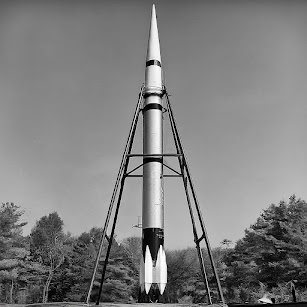With the development in India, space exploration has its own significance. Lets go deep down into the origin and development of it.
At the beginning of the 1960s, India started its space program. Dr. Vikram Sarabhai was a key person to kick-start India’s space program. In 1962 Indian National Committee for Space Research (INCOSPAR) came into being to supervise national space activities. Later on in 1969 INCOSPAR transfigured/transformed itself into ISRO, that marked a milestone in India’s journey in to the space.
Early Space Missions The first time India entered into space was in 1963 when the Nike Apache sounding rocket was launched, in collaboration with NASA. It marked a large step, pushing India forward into the area of space exploration.
In 1975 another milestone was achieved by India when Aryabhata was launched, its first satellite. Aryabhata displayed India's increasing technological achievements and led the country to the circle of nations with manned spacecraft systems.
Development of technology in the 1980s and the 1990s was spectacular in India. ISRO advanced into a new dimension in terms of satellite technology . A good example is INSAT series, which contributed greatly to information exchange system development and meteorological service improvement in India.
An important milestone on this journey was Polar Satellite Launch Vehicle (PSLV) developed in the late 1990s that enabled India to conduct space missions at an affordable price attacking thereby its space capabilities.
Chandrayaan-1 was launched in 2008 marking the beginning of India’s interplanetary journey. It was the first moon mission conducted by India and made great achievements. One of its discoveries was that there were water molecules on the surface of the moon, which raised India's position in space exploration.
Because of these exploits, India continued to prosper in this area with its Mars Orbiter Mission (Mangalyaan) launched in 2013 that became a turning point for an Asian country when it reached Mars via interplanetary journey. Success of Mangalyaan is not only known to Indians but also the world that over depended on Indian technology and cost effective approach to space exploration system.
Future Goals The Indian Space Research Organisation or ISRO, has been making continuous strides ahead in the field of space research. Prospective ventures, such as Gaganyaan, are intended for the launch of Indian cosmonauts into real space – this would represent a remarkable development for Indian astronomy as an independent science discipline. Each new mission undertaken by our country serves as both an expression of commitment to science and reaffirmation of our dedication towards technological growth within this sphere globally.
International Collaborations Furthermore, India’s space programs have triggered international collaborations. Hence, ISRO has partnerships with several countries and space agencies to share expertise and resources for mutual gains. As they work together on aspects like satellite launches, joint missions and data sharing agreements, these collaborations serve as an enhancement for India’s position in the global space domain.
Educational Outreach and Inspiration India's space achievements have inspired students and potential scientists who are aspired to be by arousing their minds. ISRO takes part in outreach programs targeted at students to urge them to take up professions in the field of science and technology with much intensity. Through projects such as student satellites initiatives and scientific exhibitions, ISRO supports budding talents in these fields which, in turn, serve to promote a spirit of creativity and concern among people.
To conclude, India has shown that it uses its scientific ability, technological creativity, and firm resolve in space research. India began with nothing but now it has attained many firsts such that people respect it globally when it comes to extraterrestrial life knowledge pursuit as well as inspiring others through cross-border interaction and partnerships beyond earth terrain.

.png)



.png)


.png)


Comments
Post a Comment